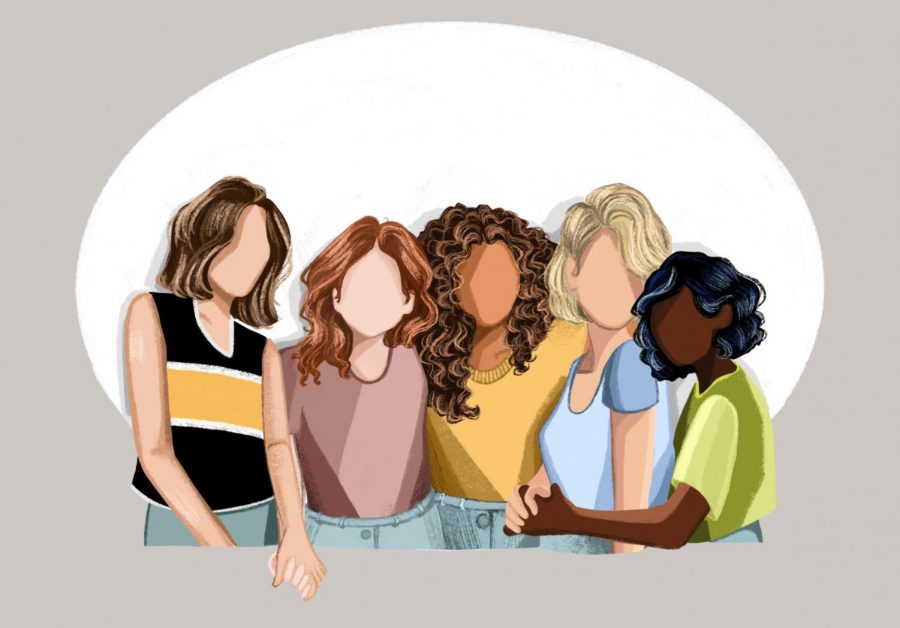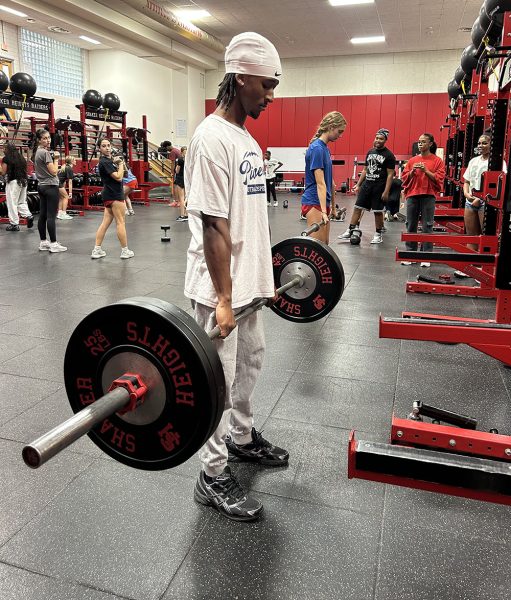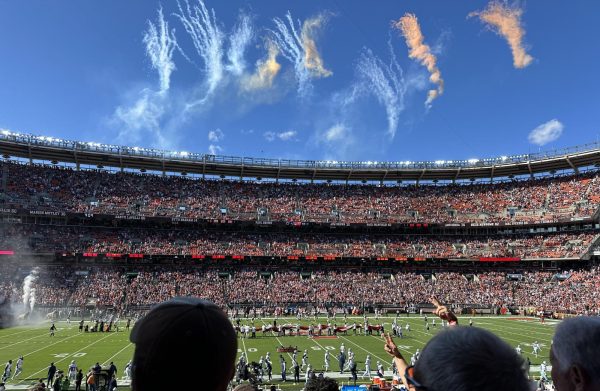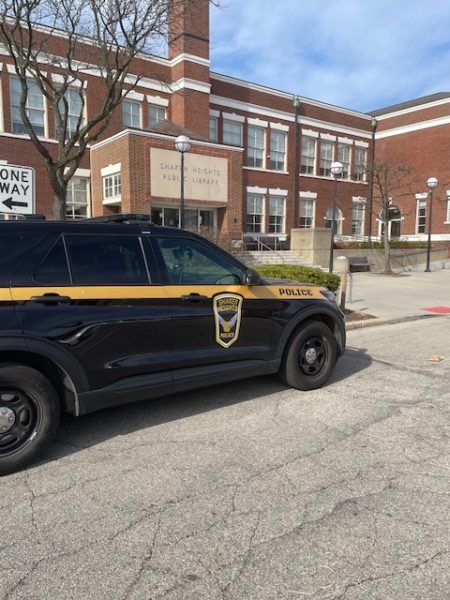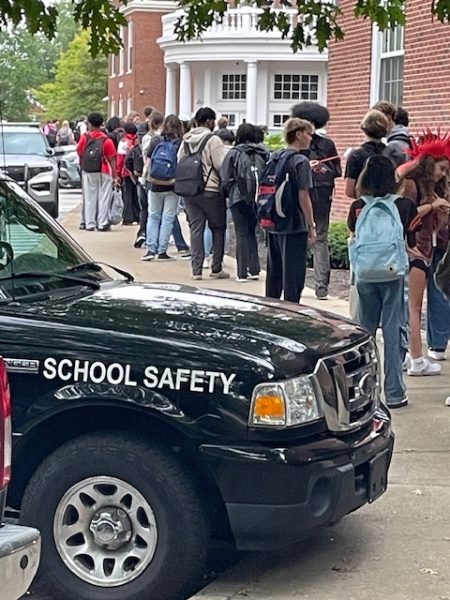‘Rite Idea: Learning Antiracism
Shaker must increase equity for all students
Without question, Shaker Heights High School is racially segregated. Whether it be in classrooms, the cafeteria or in sports, Shaker has yet to overcome its racial barriers.
The most obvious example of these barriers resides in our racially-segregated classrooms. While the International Baccalaureate program boasts high-level classes, and AP students work for college credit, these classrooms strikingly contrast the Shaker model of equity, inclusion and diversity.
Shaker’s core beliefs about education are simple: Education is one of the most important ways to better our futures. But educational opportunities are not equal for all students. Where most white students are encouraged to enroll in upper-level classes and to compete to attend top universities, Black students have often found themselves in core classes without such expectations.
Last year, for her IB Creativity, Activity and Service Project, Shaker alumna Adaeze Okoye (’20) examined ways to bring more Black students into the IB program. This year, 11 Black students participated in the IB program, compared to five in 2019 and 2018. Okoye met with the IB coordinator at the high school and even informally recruited friends to join. She spoke to friend groups of high-achieving Black students to educate them about the benefits of the IB program. Okoye’s efforts were successful; six Black students enrolled because she encouraged them to. But it is never the job of the individual to fix a systemic problem.
The district must integrate more Black students into higher-level classes. Ending tracking, an educational practice that separates students into course levels and long-term paths, was a good start. Tracks divide classes into levels to which students are assigned based on their academic ability and performance. Until this year, the district assigned students to tracks according to a combination of teacher recommendations and standardized test scores.
This separation began in the fifth grade, and these academic tracks created long-term paths for students that led to segregated classes at the high school. To combat this problem, the district eliminated class levels at the high school this year. For example, all ninth-grade students now take 9 Language and Literature, which is an honors class.
However, bringing more Black students into AP and IB Diploma Programme classes and teaching all ninth- and tenth-grade courses at the honors level is not a solution unless Shaker does something to repair the harmfully competitive culture that pervades these classes. For example, students in these high-level classes often share and compare test scores or compete to see who can apply to the most prestigious universities. For years, too many students in upper-level classes have suffered anxiety and depression because they are caught in a culture of achievement that leaves no room for Bs, state universities, community colleges or non-college paths.
How does a student who is struggling in a class feel when their peers are crying because they “failed” by earning a 93 on a test? Or how might a student anticipating attending Cleveland State University feel when their peers are upset they could only get into Ohio State’s Honors College? In the short term, diversifying enrollment will only increase the number of students who suffer silently as classmates dissect their own performances in this way.
According to a recent guest essay published in the New York Times, 46 percent of teenagers have struggled with worsening mental health since the pandemic began. However, the author states that teenagers’ mental health troubles were exacerbated not only by the pandemic, but also by the pressure teachers, parents and students themselves create to meet a narrow definition of academic success. The author, a doctoral student in clinical psychology, writes that parents can help change this culture by telling students “that where they attend college will not make or break them — and that getting Bs does not equal failure.”
But the responsibility of ensuring that detracking succeeds lies not just with parents, teachers and administrators. Students must also participate.
Students can change the culture of their classes more profoundly than even their teachers can. As detracking continues, it’s important that all students help to create an antiracist environment in classrooms. It is the responsibility of students to turn classrooms into communities, rather than intense competitions for top spots.
It is also important for both teachers and students to break their patterns of unofficial tracking. Because of the culture in our school, students within de-leveled classes will easily reproduce homogenous groups if teachers do not intervene. Teachers can combat this tendency by diversifying and rotating seating charts and by carefully creating groups for projects, activities and discussions. But exquisitely crafted seating charts will not solve all of our problems. It is necessary to create community within our classrooms first.
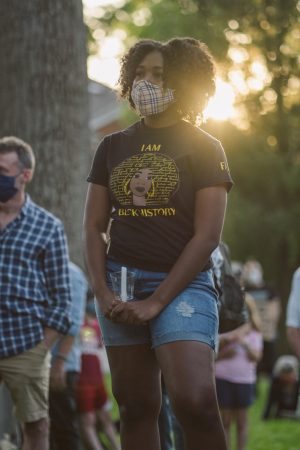
For example, if teachers meticulously create project groups so that each group comprises two white students who have been on the honors track and two Black students who have not, these students may not know one another. Why assume that these groups would not revert to one or two students taking charge, doing almost all of the work and excluding peers in the name of efficiency and a higher grade? Such behavior exists in upper-level classes already. It is necessary to build a classroom community so that students prioritize their collective learning instead of the competitive culture of reaching for a perfect mark.
But, then again, creating this community of collective learning is not easy and requires resources and bold actions: Creating smaller classes, hiring more teachers, making time for relevant professional learning, accepting weeks of classes devoted to community building, and, dare we say, even abolishing a grading system. There is no perfect way to create or suggest a plan to end the racist and elitist culture within our schools and upper classes. The Editorial Board members who wrote this ’Rite Idea are white, and we will neither pretend to know the experience of our Black peers nor try to anticipate them. However, we have been students at Shaker long enough to anticipate where some challenges in de-leveling classes may lie, and we are trying to draw attention to and suggest ways to address them. This year is merely the start of Shaker’s efforts to achieve equity, which barely scrape the surface of systemic racism ingrained into both American society and schools.
The way we do school must change. Right now, for too many students, it’s everyone for themselves: Get top grades and move on to top colleges and careers. This is an important aspect of school, and such achievements are worth pursuing, still. But we must also pursue equity. Creating an antiracist world is far more important and is only possible through an education that Shaker can provide. However, this type of education will not exist in Shaker unless all students, teachers, administrators and parents commit to change our district.
Shaker can end the stigma that tracking has created for Black students. Principal Eric Juli is committed to achieving equity in the high school. Whether by de-leveling classes, by writing passionate condemnations of students’ sexist actions, or by challenging the staff to forge an antiracist school, Juli has made it clear that he cares.
With this kind of leadership, Shaker can begin to break down racial barriers, but only if we all work to create equity.
A diverse student body calls for diverse curriculum
Scott Fitzgerald. Charlotte Bronte. John Steinbeck. These are just a few of the authors that most Shaker Heights High School students will read during their four years here. Students will learn about the heroes of the Revolutionary War, the kings who ruled Europe, the poems of Emily Dickinson. They will learn about white culture, history and literature from white voices.
Depending on the classes a student chooses, they will read a minimal amount of Black literature. Before the district eliminated levels at the high school this year, honors English students did not read a Black-authored novel until studying Zora Neale Hurston’s “Their Eyes Were Watching God” in the tenth grade. Teachers note that Hurston’s novel was criticized by other Black authors of the Harlem Renaissance because it was so easily embraced by a white audience. They argued that Hurston’s work did not represent the Black experience and that it appeased white readers because it did not challenge their stereotypes of Black people.
Despite that critique, we should still read Hurston’s book. However, because of that critique, it should not be one of the few books by a Black author to appear in the curriculum. Black literature is vast and diverse. Our curriculum should integrate Black authors into every English class to truly embrace Black literature and teach students about the world in which they’re growing up.
Black stories are also too rarely taught in history classes. For example, all freshmen are required to take Global Studies, a class encompassing global history. But some events studied in this class, such as the French Revolution and World War I, repeat throughout a students’ time in the district. Both of these examples are taught again to juniors who take AP European History and AP World History. It is vital that students study these events, but it is not worth relearning them at the expense of other important stories.
Sophomore year, students have the chance to learn Black American stories when they take U.S. History, but most classes don’t cover these stories deeply. Instead, students learn about the founding fathers and the World Wars. Teachers discuss the brutality of slavery, Jim Crow and the war on drugs, but in less depth than necessary to fully understand how these events contribute to the institutionalized racism of today. Black accomplishment, which was vital to the growth of America, is also hard to find in the curriculum.
Students can study AP U. S. History during the sophomore year, and there is often pressure to do so. Because the class is governed by the College Board and the AP exam at the end of the year, teachers can’t individually change the curriculum to broaden the range of events and perspectives studied. Students who choose the course to gain college credit and prestige may miss out on learning a vital part of history. The district must put more emphasis on being a well-rounded learner, instead of one who just takes difficult classes to fill up a college application. The College Board and AP exams are not going anywhere, so it is imperative that the school uses the resources and time available to teach Black history. Shaker must require all students to take a class that focuses on Black American history. Perhaps a semester long, scheduled opposite Health. Doing so would mean all students would learn Black history rather than relying on teachers to fit it into existing courses.
Junior year, students are given their first opportunity to take a history class that focuses less on white history. They can choose to take AP World History and learn about African kingdoms, the Mongols, global revolutions and other topics that are important but brand new to most students. AP World gives students a more global perspective, but it has a reputation of being more difficult than AP European History, which focuses on the same Eurocentric history taught throughout students’ entire school career. However, AP World History — the one AP course that includes non-white history — is not being offered at the high school for the 2021-22 school year. According to AP World History teacher Amanda Ersek, the decision was made to limit the number of unique courses teachers will have to prepare for next year.
In addition to those classes, juniors and seniors can choose to take a Black history class at the high school taught through Kenyon College. This class, taught by Jessica O’Brien, addresses parts of Black history that are vital to the American story but are often left out of traditional history classes. Students learn about the true horrors of slavery and the middle passage, the rise of the KKK and the response to it, the Tuskegee Experiment and other injustices in the Black community throughout our history. Students are also taught about Black accomplishment throughout the course.
KAP African-American history, however, is a college class that requires writing, reading and discussion. This doesn’t suit the needs of all students, and the knowledge that the class will come with more work than other history classes deters some students from enrolling.
Shaker is special. We have been noticed nationally for our amazing and diverse community. We have been called out when we have hurt Black students and fallen short of equity, and we have been celebrated for striving toward equity. But we need more.
Education is the first step to an antiracist society. Perhaps one of the easiest ways to begin to eliminate these unconscious biases when creating groups or fast-tracking students might be to include more comprehensive guidelines for teachers. It is all too common that English classes reading literature stumble across the n-word or another derogatory term. Some teachers read these words aloud; others don’t. It is entirely unclear, then, for a student to know how to handle such terms when reading aloud in class, and, of course, students who are subject to those slurs because of their identities are in an extremely uncomfortable environment.
If all students and staff were familiar with one common set of guidelines about how to approach discussions appropriately, these situations would decrease, and a more uniform learning environment would emerge.
David J. Childs, a professor of Black studies at Northern Kentucky University, promotes integrating diversity into school curriculums. Childs grew up in a Black community but was not exposed to Black literature, and therefore felt excluded from his own education. Childs believes that “teachers should be intentional about diversifying their curriculum and building a more diverse classroom library” in order to teach students about Black life and fight the white supremacy that is implicit when only teaching white authors as “the greats.”
To learn Black history, students must choose to take an elective class, whereas white history is considered part of the core curriculum and is necessary to graduate. As a district that prides ourselves on equity and inclusivity, an important step is being completely forgotten. In order to become a truly antiracist community, we must take the basic step of taking control of what is taught in our schools.
The district can revise the high school curriculum while fulfilling state requirements and preserving AP and IB courses.
Shaker needs to change what it teaches students. Instead of learning about the founding fathers’ accomplishments throughout their school careers, students need to learn also about those men’s racism and misogyny and how it still affects our nation today. Instead of learning a dulled-down version of slavery, we must learn just how systemically brutal the institution and the people who perpetuated it were. Instead of learning about just Black pain, we must also learn about Black joy and accomplishment.
Schools are uniquely positioned to create an antiracist society. A school that prides itself on its diversity and equity as Shaker does must seize this opportunity.
A version of this article appears in print on pages 46-51 of Volume 91, Issue I, published May 28, 2021.

